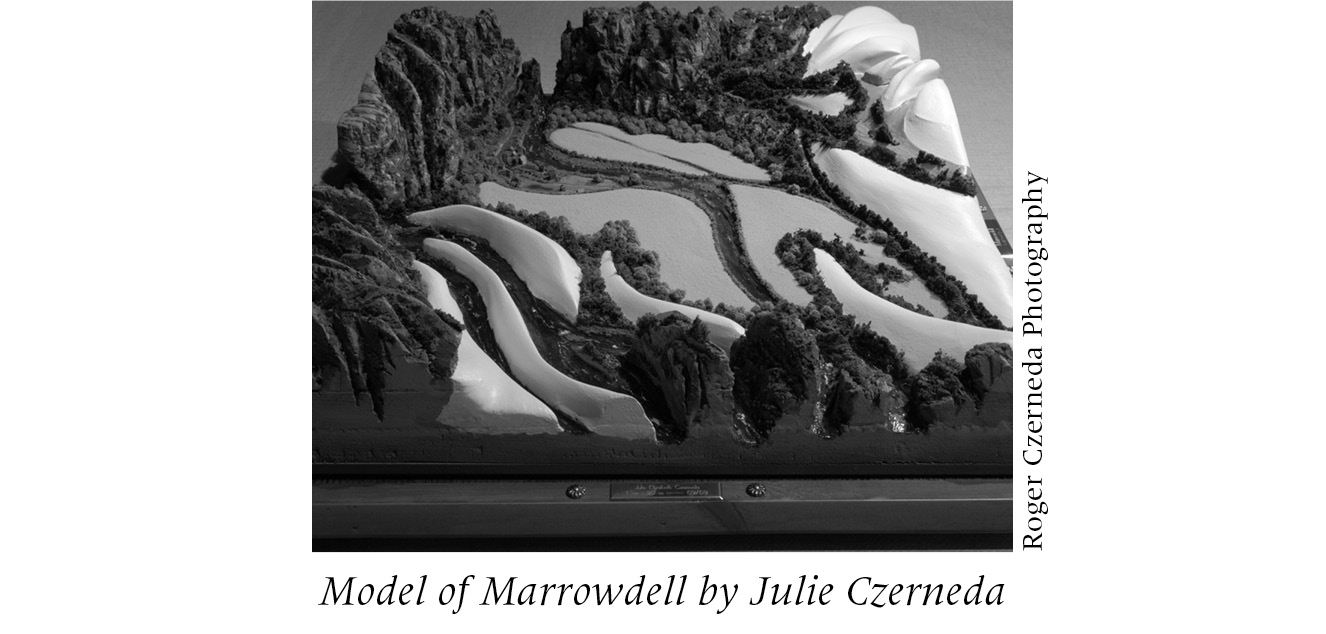We Can Help With That
I set off, quite literally, to learn as much as I could about the people who would have lived then and there; not to recreate an historically accurate village, but to come close enough to make my settlement a rich and workable one. What I knew about pioneers could fit in a thimble. There’d been that month in grade 5, a smattering from a Canadian history class in high school, and the odd bits one gleans about a place by being curious. I won’t get into the joyous months of research that ensued or how many books I read. What matters here? The people who’ve helped me breathe life into Marrowdell, for I didn’t do it alone.
I love water and human ingenuity; no surprise, then, that I fell in love with mills. I happily climbed in and through all the derelict gristmills I could locate, then found a true gem. Watson’s Mill, Manotick, is an operational gristmill on the Rideau River. While it’s far grander than the one in Marrowdell (though what I imagine Radd Nalynn would have owned in Avyo) the principles are the same. I was privileged to interview Master Miller Cam Trueman, not once, but twice. Cam answered my eager questions, volunteered fascinating details I couldn’t have found any other way, and even ran the mill just for me. While Roger documented the visual, I scribbled madly in my notebook. To top it off, just before publication, Cam very kindly read over the mill scenes from Turn. While any errors in fact and leaps of fantasy

are mine, I was thrilled beyond words to have his support and approval. Thank you, Cam and Watson’s Mill.

Early on, I discovered I had only to mention I was researching early settlements and farm life to be offered help. My thanks to Judi and Andy Williams for lending me two books that were of immense help: A History of Domestic Space: Privacy and the Canadian Home (1999) by W. Peter Ward, UBC Press and Sisters in the Wilderness—The Lives of Susanne Moodie and Catharine Parr Traill (1999) by Charlotte Gray, Penguin Books Canada. The latter led me to the books of Susanne Moodie and her sister, as well as their letters.
Also, I must thank Roger’s hockey buds. Several of these fine gentlemen are farmers. When I asked them what to call that little window thing in the top of a barn—a term I couldn’t find in the otherwise excellent Looking For Old Ontario: Two Centuries of Landscape Change (1999) by Thomas F. McIlwraith UTP—I was faced with such an earnest combination of goodwill and growing perplexity I felt guilty. (It turns out there’s actually no name for it that everyone uses and we won’t get into the “diamond cut-out” issue at all.) Nothing would do but I be taken to the real thing. Thank you, Jim and Nancy Partridge, for letting me wander through your magnificent barn, and thank you, John and Nancy Nicoll, for the loan of your very helpful book.
I must also thank Ron Gostlin, Manager of Muskoka Heritage Place, Town of Huntsville. Ron unlocked the gates pre-season so I could step back through time. (The wonderful things people do for writers!) It wasn’t until I walked around the log buildings and barns that I came to appreciate what I’d read of how people

lived inside them. Small, yes, but strongly built. Bright, too, so long as the sun was up, with generous windows. Compact by necessity, but well-organized.

My measurements from the pioneer village, coupled with research into the farming and acreage needed to support a settlement like Marrowdell, determined the scale and contents of my model landscape. It took me a month to build and was worth every minute, allowing me to immerse myself not only in fantasy, but place.
Sometimes, it’s getting the small details right that most please an author. Playing with my grandfather’s tools. How to make lye—or beer! Learning the smell of whey. Scourge’s itchy fall shed owes its veracity to the mighty Duncan and Doranna Durgin. The consequence of wandering cattle to a pumpkin patch? Thanks, Lydia Cook! And I owe the names of Rhoth’s rivers to Janet, Willem, Leora, and Mila Chase.
I’ve been changed by what I’ve learned of the lives, loves, and homes of those first settlers. Those familiar with Ontario may notice some unexpectedly familiar names in this book. As my small tribute to the source of my inspiration, most of my character names came from the pioneer settlements and roads in this area, and the families who built them. Anten and Ansnor. Uhthoff and Emms. Devins, Horst, and Zehr. More. By all means look them up.
May their history come to life for you, as it did for me.